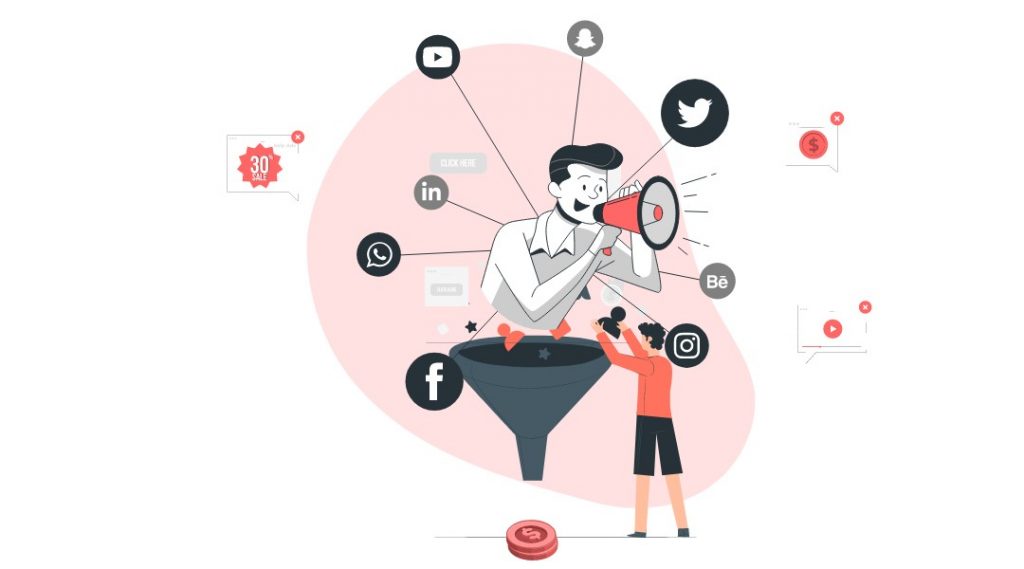You want visitors to your e-commerce site to add a lot of items to their carts and spend a lot of money. Although that makes sense, what if they don’t? 7 out of 10 visitors who add an item to their cart eventually leave without making a purchase.
Online shoppers are constantly looking for information, and occasionally they don’t react right away, at least not in the way you want. For instance, customers might leave right away. They are interrupted from their computer screens by phone calls or turn off their mobile devices when they reach their destinations. The truth is that not every customer can be acquired on the first visit. For this reason, we have collected the advice we believe will enable you to recognize marketing tactics that aim to draw in these visitors and persuade them with a secondary product offer.
Prior to discussing the key suggestions and bullet points, it is important to define keywords;
E-commerce
A business model that enables organizations and people to buy and sell goods online. Four marketing segments are active in e-commerce, including:
business-to-business (B2B).
business-to-consumer (B2C).
consumer-to-consumer (C2C).
consumer-to-business (C2B).
Conversion funnel
A marketing funnel is a list of all the different paths a prospective customer can take from learning about your products or brand to buying those products. By using this model, businesses can better understand the needs of their customers at every stage, maximize their marketing efforts, and increase sales.
Creating an effective E-commerce marketing funnel: Some pointers

An e-commerce sales funnel consists of several steps, commonly referred to as the top, middle, and bottom of the funnel, though these steps can change depending on the retailer’s sales model. We will provide a step-by-step tutorial on these marketing funnels in our following post.
Learn about your audience
Without being aware of the problems and interests of your customers, it is impossible to create a marketing funnel. Investigate the clientele of your rivals for additional insightful information; you probably have a lot in common. Pay attention to survey results, social media, web analytics, and feedback from your current clients as well.
Learn how your customers behave.
Along with figuring out who your clients are, try to comprehend how they use your websites and other resources. What TV shows do they favor? What obstacle prevents them from making a purchase? What uncertainties and issues do they encounter while making the purchase? Finding the best location for your funnel and ways to move customers through it are made easier by providing answers to all of these.
Decide how many stages there will be.
Modern marketing funnels do not necessarily require your customers to proceed through all of the stages. You can define six steps or just focus on the top, middle, and bottom of the funnel rather than post-purchase stages. The exa6model is based on the model of your buyers.
Find the most successful marketing strategies
This will enable you to transform the marketing funnel into a useful tool. Consider your desired channels, tactics, and content types to use for each stage. For instance, you might use blog posts or PPC ads to draw in leads, nurture those leads with email marketing, and then persuade those leads to buy your products through case studies or events.
Utilize customer relationship management software (CRM)
CRM tools like Hubspot assist businesses in managing client relationships, allocating sales representatives in charge of each deal, and corresponding with clients via chat or email. With OptiMonk, marketers can increase email list size, lower cart abandonment, advertise exclusive deals, and more.
Contact Kotlead for knowledgeable assistance.
Although it is fantastic to use these tools to your marketing advantage, there are always time, experience, and cost considerations. Because of this, working with Kotlead as a consultant will give you the freedom to concentrate on product development while our team utilize these tools to your advantage. We have the necessary time, experience, and expertise to increase sales on your e-commerce website.
Track modifications
A marketing funnel cannot be created and left unattended. Test new marketing strategies and content formats to make this tool more effective. Keep an eye out for shifts in your customers’ behaviour.
While it is great to use these tools to your marketing advantage, there is always time constraint, experience and cost. That is why consulting with Kotlead will afford you the leverage to focus on product development, while our team focus on utilizing these tools to your business advantage. We have the experience, time, and skills relevant to driving sales to your e-commerce website.
Keep track of changes.
You cannot just craft a marketing funnel and call it a day. To make this tool effective, remember to test new marketing tactics and content formats. Look for changes in your customers’ behaviour.
Wrapping up
The e-commerce marketing funnel can prove complicated, but if you’re armed with the right data, you can improve the user experience and generate more sales. That’s why I recommend collecting data frequently. And in most cases where such data seem ambiguous, too complex, and difficult to obtain, you can always contact Kotlead to help you do the dirty work of extracting, transforming, and using that data to create marketing insight.